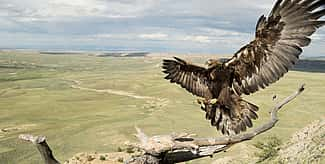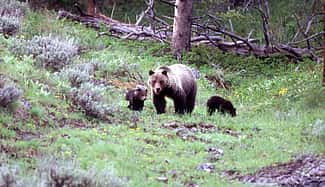Draper Natural History Museum
Draper Natural History Museum staff and volunteers conduct long-term ecological research in the Greater Yellowstone Ecosystem and keep up with all the wildlife and science news and issues related to this world-renowned, natural treasure. Keep up with Draper Museum fieldwork and Greater Yellowstone news and information here.

Center of the West shares golden eagle research in new exhibition
A new exhibition is soon to take flight at the Buffalo Bill Center of the West’s Draper Natural History Museum, Monarch of…

Electronic Press Kit: Monarch of the Skies
The Buffalo Bill Center of the West’s Draper Natural History Museum opens an exciting new permanent exhibition in June 2018, Monarch of the…

Museum Minute: Yellowstone’s “Most” Famous Bear: Bear 104
Bear 104 was a female grizzly bear who made her home on the edge of Yellowstone National Park and Shoshone National Forest,…

Sharp-shinned and Cooper’s Hawks, the Uninvited Guests
As I looked out my window I spot an uninvited guest arriving. It settles on a branch near one of my sunflower…

Introducing the Western Screech-owl
For many people, owls are a favorite bird. One of the most common owls in the United States is the small Screech-owl….

The History and Realities of Large Carnivore Expansion
Mountain lions, wolves, and grizzly bears are all thriving in Wyoming. But only a couple of decades ago, these large carnivores were…